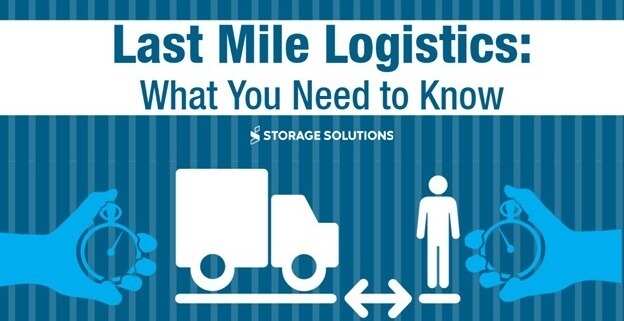Micro-fulfillment Centers and Last Mile Logistics
Did you know that e-commerce return rates comprise 20% of total orders? Did you know that 84% of shoppers are unlikely to purchase again after a bad experience with an e-commerce company? Did you know that the final stage of delivery of a product makes up 53% of total shipping costs?
As changes in consumer demand continue to accelerate, warehouses and distribution centers are looking at how they can handle quicker order processing and faster delivery, especially in the area of last-mile logistics.
For the uninitiated, last-mile logistics – also known as last-mile delivery – is a supply chain industry term that examines how a product travels from a distribution center to its final destination, typically a consumer. To meet the changing demands of consumers, the goal of last-mile logistics is to transport an item in the quickest way possible. However, this stage is often the costliest in the fulfillment process.
What Challenges are Seen in Last Mile Logistics?
The challenges that need to be overcome in last-mile logistics are typically associated with cost, timeliness, and customer satisfaction. Deliveries that feature more stops lead to more time spent before the product gets to the end-user. Urban areas do not offer the speed and fuel efficiency that interstates do, so costs add up. Also, product returns lead to higher operating costs and lower profit margins – whether those are built into a product’s prices or not generally depends on the type of industry from which the product is ordered.
What is the Typical Response to Improving Last Mile Logistics?
In response, warehouses and distribution centers turn to micro-fulfillment centers, typically closer to urban areas, to cut down on the time and cost of delivery. We break down how micro-fulfillment centers help companies meet these new expectations here in greater detail. However, the general idea is to supply these centers will a high volume of similar, regularly ordered products.
Typically, these products are small, relatively inexpensive items such as headphones, apparel, and other goods you may see at lower prices from e-commerce retailers. Because they have such a high volume of orders, these items are stored closer to the consumer. Without micro-fulfillment facilities, these items are stored in large warehouses that were previously designed to fulfill larger orders.
Changing the Way Facilities Support Staging
To facilitate a quicker delivery, more and more we are seeing independent delivery drivers with a lesser dependence on the big shipping organizations like FedEx, UPS, or the USPS. This shift in staging necessitates a change in outbound flow systems. Because companies are using these contracted drivers, the equipment and fulfillment processes within facilities require different methods to get the packages to the independent, often-smaller delivery vehicles, which then gets the product to the end-user quicker. Companies using this newer model allows more organizations to keep up with the e-commerce giants of the world and facilitates a modern delivery method.
Why Use Micro-Fulfillment Centers?
When those smaller, single item orders are placed in a more massive warehouse, the fulfillment process takes longer and is more expensive. The products are further away from masses of population in these transportation hubs, but they also become burdensome to pick because the opportunity cost of picking these items becomes too high. For instance, an employee could pick a single pair of headphones in a similar amount of time that the warehouse could fulfill an order for an entire pallet of products. The value proposition becomes clear: micro-fulfillment centers are smaller, more cost-effective, and offer quicker turnarounds than their big-box warehouse counterparts.
How Can We Help?
To cut down on the cost and time spent on fulfilling orders, companies are setting up these micro-fulfillment centers at an increasing rate. Some companies are even converting abandoned retail stores to serve in this capacity. As they are being built or adapted, they are developed with a high level of technology & automation. While that is certainly a viable option, it can be more expensive than what the new facility truly needs. Through a combination of dynamic, technological, and storage solutions, these centers can be built at a fraction of the cost that one may see, compared to a fully automated facility.
We have years of experience working with our clients in finding the right mix of storage, dynamic & technology solutions to suit their needs now, with the capacity and flexibility to grow in the future. Storage Solutions can work with you to turn these complex logistical conundrums into profitable decisions that can help your company save resources and stay focused as you transition into these micro-fulfillment centers.
Consumer demand is not slowing, and neither is the competition. To meet needs, it is essential to stay up to date with the latest trends and solutions being developed to support changes in the supply chain. With Storage Solutions, you have a helping hand to guide you to ensure your decisions are simple, smart, and strategic for your organization.




